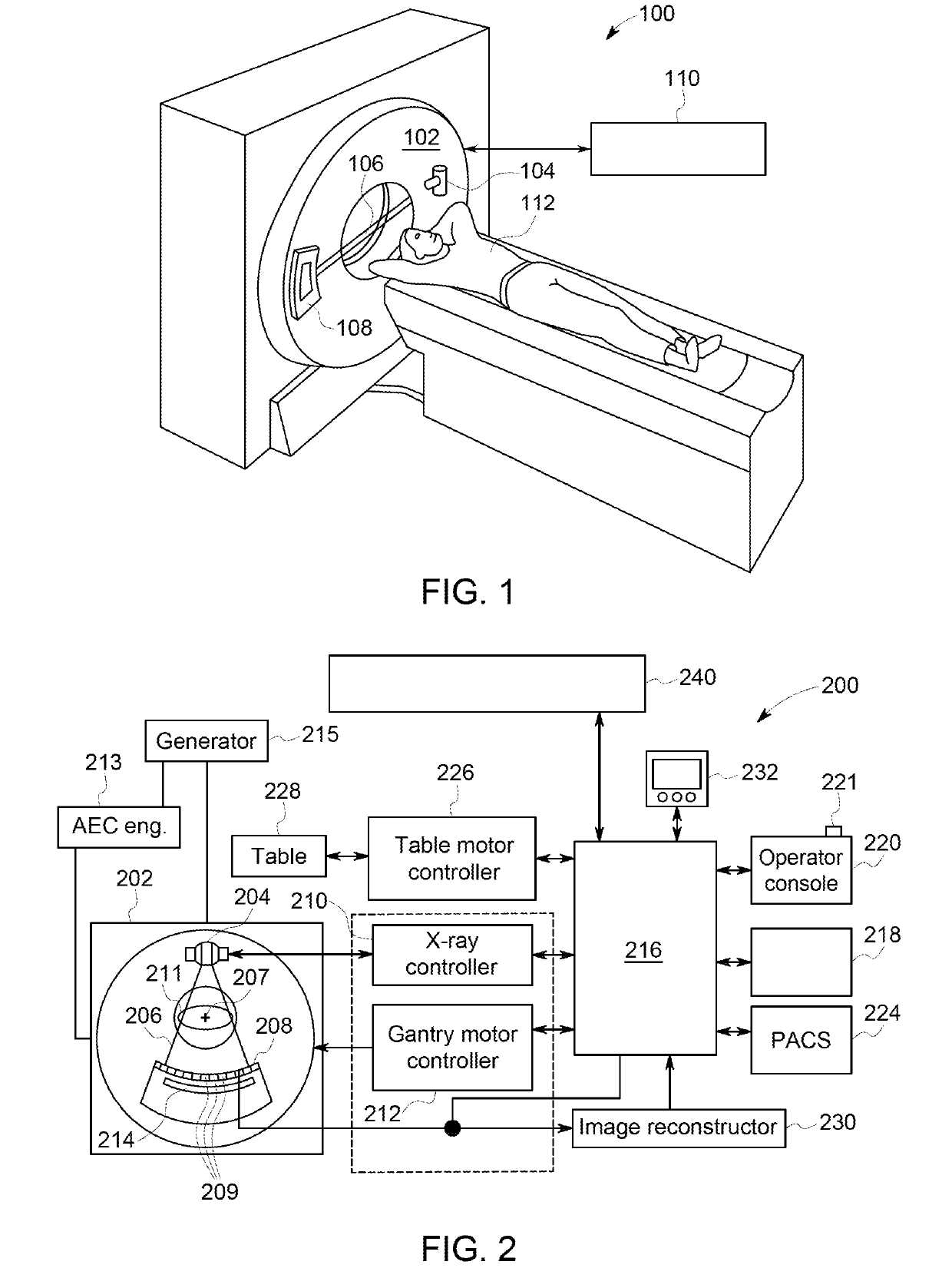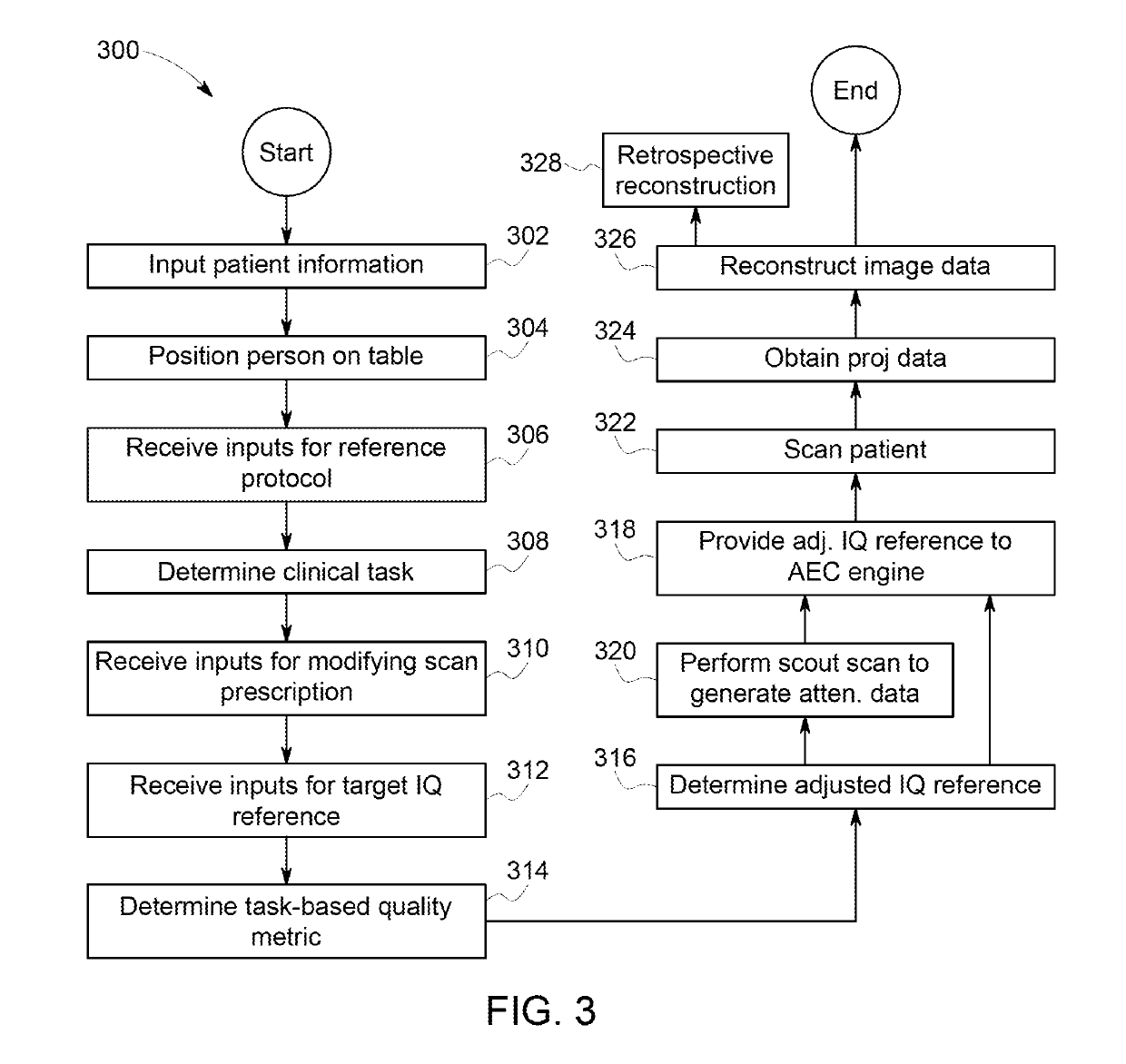Ct imaging system and method using a task-based image quality metric to achieve a desired image quality
a task-based, image quality metric technology, applied in the field of medical imaging systems, can solve the problems of affecting the overall image quality of the aec engine, the person to a greater amount of radiation, and the noise alone may not preserve the “look and feel” of the image, etc., to achieve the effect of difficult and time-consuming
- Summary
- Abstract
- Description
- Claims
- Application Information
AI Technical Summary
Benefits of technology
Problems solved by technology
Method used
Image
Examples
Embodiment Construction
[0037]Embodiments set forth herein may calculate and / or utilize a task-based image quality (IQ) metric in order to generate image data having a desired overall image quality. The task-based IQ metric may be determined (e.g., calculated) using a detectability index. The detectability index may be a task-based, frequency-dependent signal-to-noise ratio (SNR) metric that combines spatial resolution (e.g., modulation transfer function (MTF)) and noise properties (e.g., noise power spectrum (NPS)) of a CT imaging system and spatial-frequency content of a task object. In particular embodiments, the task-based IQ metric is derived from a non-prewhitening detectability index. The task-based IQ metric may be labeled or referred to as “d′” or “d′gen” in the description and claims.
[0038]Embodiments may enable development of a new protocol that achieves a desired image quality for a designated clinical task. For example, embodiments may enable development of a new protocol that is based on one ...
PUM
 Login to View More
Login to View More Abstract
Description
Claims
Application Information
 Login to View More
Login to View More - R&D
- Intellectual Property
- Life Sciences
- Materials
- Tech Scout
- Unparalleled Data Quality
- Higher Quality Content
- 60% Fewer Hallucinations
Browse by: Latest US Patents, China's latest patents, Technical Efficacy Thesaurus, Application Domain, Technology Topic, Popular Technical Reports.
© 2025 PatSnap. All rights reserved.Legal|Privacy policy|Modern Slavery Act Transparency Statement|Sitemap|About US| Contact US: help@patsnap.com



